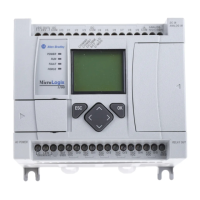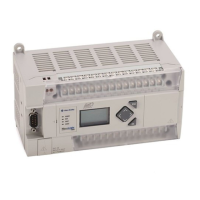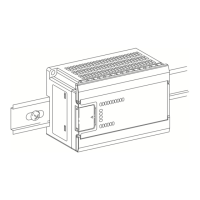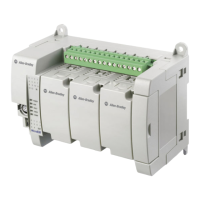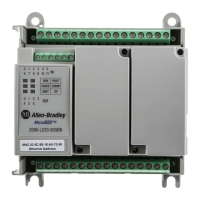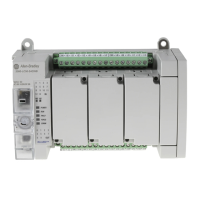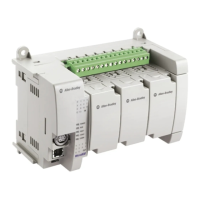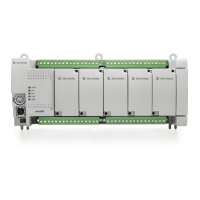Publication 1764-UM001B-EN-P - April 2002
E-6 Understanding Communication Protocols
The DH-485 protocol supports two classes of devices: initiators and
responders. All initiators on the network get a chance to initiate
message transfers. To determine which initiator has the right to
transmit, a token passing algorithm is used.
The following section describes the protocol used to control message
transfers on the DH-485 network.
DH-485 Token Rotation
A node holding the token can send a message onto the network. Each
node is allowed a fixed number of transmissions (based on the Token
Hold Factor) each time it receives the token. After a node sends a
message, it passes the token to the next device.
The allowable range of node addresses is 1 to 31. There must be at
least one initiator on the network (such as a MicroLogix controller, or
an SLC 5/02™ or higher processor).
DH-485 Configuration Parameters
When MicroLogix communications are configured for DH-485, the
following parameters can be changed:
See Software Considerations on page E-10 for tips on setting the
parameters listed above.
Table E.1 DF1 Full-Duplex Configuration Parameters
Parameter Options
Baud Rate 9600, 19.2K
Node Address 1 to 31 decimal
Token Hold Factor 1 to 4
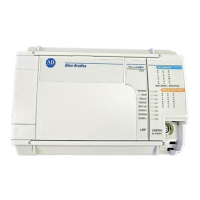
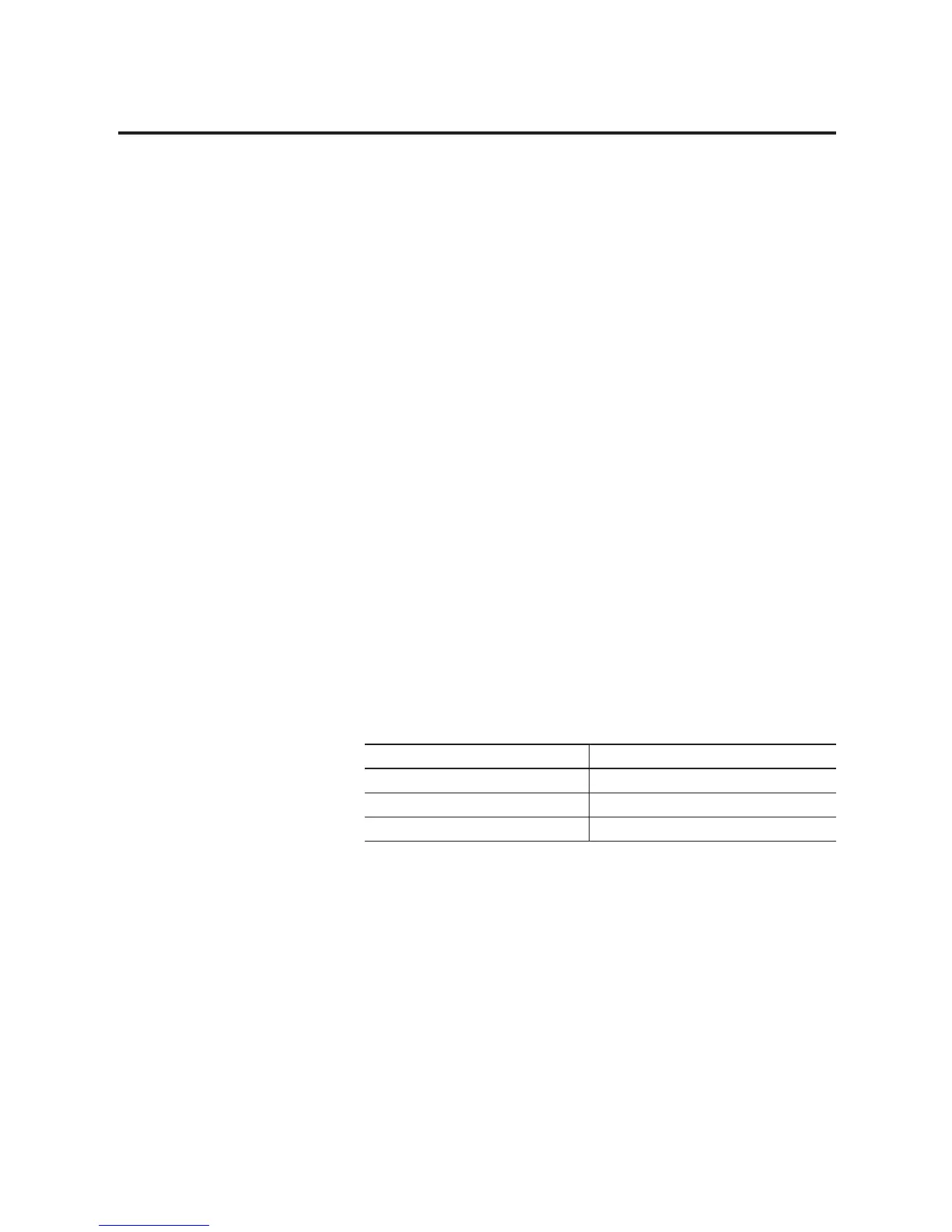